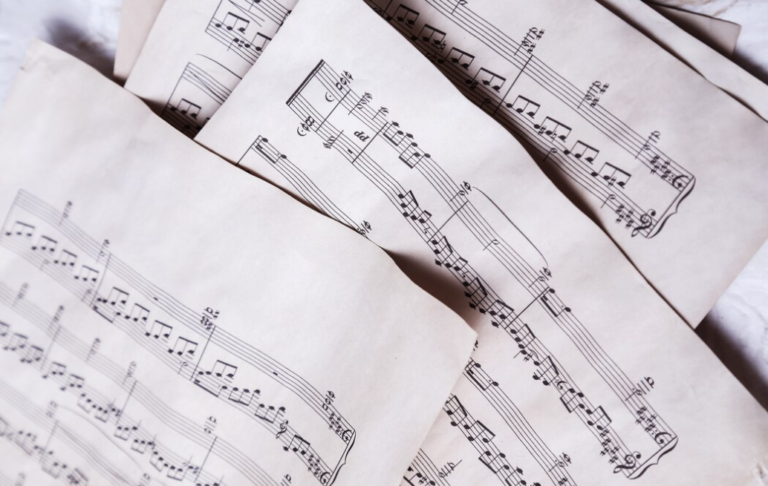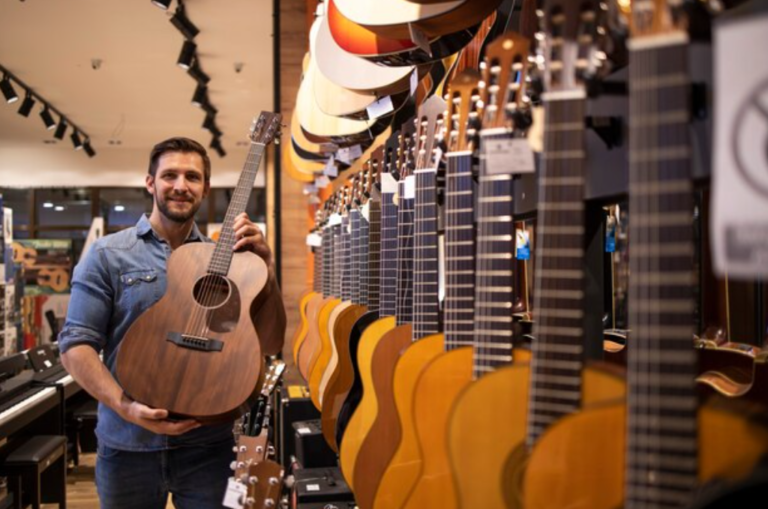Everything You Need to Know About The A Barre Chord
Ever envisioned yourself on a stage, your fingers effortlessly navigating the fretboard, striking the perfect A major barre chord that resonates through the hall? Envision it. Experience it. You’re not merely playing a guitar; you’re crafting a musical narrative with six strings.
Welcome to this expert, one-of-a-kind “How To”, born from years of dedication and practice, where we’re about to delve into the nuances of the A major barre chord. This isn’t just any chord. It’s a fundamental element, the pulsating core of guitar music. Every accomplished guitarist has this chord in their arsenal, but the true artistry lies in how well you can express it, and how you make it resonate. Are you ready to master its subtleties, to play that chord with precision and grace, to let your guitar resonate with emotion? Let’s dive in, shall we?
The Rich History of the A Barre Chord
The A Major Barre Chord, often called the A bar chord, plays a pivotal role in guitar history, evolving alongside the instrument and various music genres.
Step-by-Step Guide to Playing the A Major Barre Chord

The A Major Barre Chord allows playing the A major chord in different positions. Here’s how to play it:
Based on the E Major Shape
- Find the root note on the low E (6th) string, at the 5th fret.
- Barre the 5th fret across all six strings.
- Form the E Major Shape with other fingers, placing them on the 7th fret of the A (5th) and D (4th) strings, and the 6th fret of the G (3rd) string.
- Strum all strings, ensuring clarity.
Based on the A Major Shape
- Finger Placement: Keep the barring finger close to the fret for clear sound.
- Hand Position: Maintain thumb support at the back of the neck.
- Regular Practice: Develop finger strength and flexibility through consistent practice.
- Transitioning: Work on smooth transitions between the A major barre chord and other chords.
Common A Major Barre Chord Shapes
- E Major Shape: Barre at the 5th fret, using the E major chord shape.
- A Major Shape: Barre at the 12th fret, using the A major chord shape.
Transitioning to the A Major Barre Chord
Begin with simpler chords and gradually integrate the A major barre chord into practice sessions.
Early Beginnings
The story of the barre chord, including the A Major version, begins with classical guitar. For guitarists, the ability to play chords across the fretboard was crucial. The barre technique was developed for this, using a finger (typically the index) to press multiple strings at a single fret. The A Major chord, traditionally an open chord, was transformed with this technique, allowing for varied positions on the neck.
Renaissance and Baroque Periods
Renaissance and Baroque Periods
During the Renaissance and Baroque periods, the guitar underwent significant evolution, primarily serving as a rhythm instrument. This was a time when music began to shift from monophonic (single melody line) to polyphonic (multiple independent melody lines) textures, and the guitar played a vital role in this transition.
Role of the Guitar: In these eras, the guitar was not yet the prominent solo instrument it is today. Instead, it was often used to accompany singers or as part of ensembles. Its primary function was to provide harmonic support and rhythmic foundation. The strumming and plucking of chords set the rhythm and enriched the harmonic landscape of the music.
Importance of Barre Chords: The introduction of barre chords, including the A Major, was revolutionary. These chords allowed guitarists to play a wider range of harmonies and to transition smoothly between different chord shapes. The A Major barre chord, in particular, provided a richer and fuller sound than open chords, which was a significant advantage in ensemble settings where the guitar needed to assert its presence.
Harmonic Diversity: The A Major barre chord, along with other barre chords, enabled guitarists to explore more complex chord progressions. This was crucial in an era where musical complexity was increasingly valued. The ability to play barre chords meant guitarists could easily modulate to different keys and add harmonic variations to their playing, making the music more expressive and dynamic.
Influence on Guitar Techniques: The use of barre chords in the Renaissance and Baroque periods laid the groundwork for more advanced guitar techniques. As composers and musicians pushed the boundaries of what the guitar could do, techniques like fingerpicking, complex strumming patterns, and intricate solo passages began to develop. With its versatility and full sound, the A Major barre chord was a stepping stone to these more sophisticated playing methods.
Impact on Guitar Design: The increasing use of barre chords also influenced the design of the guitar. Luthiers (guitar makers) began to experiment with the size, shape, and construction of the guitar to facilitate easier and more effective barre chord playing. This led to innovations in the instrument’s design, which would continue to evolve in the subsequent centuries.
Classical and Romantic Eras
Guitarists like Fernando Sor and Francisco Tárrega explored the guitar’s capabilities as a solo instrument, incorporating the A Major barre chord into their compositions and expanding the harmonic range.
Fernando Sor (1778-1839)
- Musical Innovations: Sor, often referred to as the ‘Beethoven of the Guitar’, was a Spanish guitarist and composer who revolutionized guitar music. He brought a classical purity and depth to guitar compositions, often drawing comparisons to the works of Mozart and Haydn in terms of structure and harmonic sophistication. His use of the A Major barre chord, among others, allowed for more complex and varied harmonic progressions, enhancing the expressiveness of his compositions.
- Contribution to Guitar Technique: Sor’s approach to the guitar was both innovative and influential. He emphasized the importance of a clear tone, fluid phrasing, and nuanced dynamics, which were relatively new concepts in guitar playing at the time. His compositions often required the use of barre chords to achieve smooth modulations and to facilitate melodic passages that spanned the entire fretboard.
- Educational Legacy: Sor also left a significant educational legacy through his method books. These works laid out principles of guitar technique, including the effective use of barre chords. His exercises and studies are still used by classical guitar students today for their technical and musical benefits.
Francisco Tárrega (1852-1909)
- Expanding the Guitar Repertoire: Often called the ‘father of classical guitar’, Tárrega was pivotal in establishing the guitar as a respected solo instrument in classical music. He expanded the guitar repertoire, not only through his compositions but also by transcribing piano works by composers like Beethoven, Chopin, and Mendelssohn for the guitar. His use of the A Major barre chord was integral in these transcriptions, allowing him to faithfully reproduce the harmonic richness of the original piano pieces.
- Innovative Playing Style: Tárrega was known for his innovative playing style, which included the extensive use of barre chords to create a fuller and more orchestral sound. His approach to the A Major barre chord and others was both technical and expressive, enabling him to convey a wide range of emotions and dynamics.
- Influence on Guitar Construction: Tárrega’s playing style and requirements also influenced the development of the modern classical guitar. He collaborated with luthier Antonio Torres to create guitars that were larger and had a more resonant sound, better suited to the demands of his playing style and the expanded use of barre chords.
Jazz Age
Jazz required a versatile chord approach due to complex progressions and key changes. The A Major barre chord was crucial for its ease in transitioning between different shapes and keys. The Jazz Age, a period marked by innovation and complexity in musical expression, brought about significant changes in the way guitar was played. Jazz music, with its intricate chord progressions and frequent key changes, demanded a highly versatile approach to chord playing. The A Major barre chord played a crucial role in meeting these demands due to its flexibility and ease of transition.
Complex Harmonies and Progressions: Jazz music is characterized by its use of extended chords, altered harmonies, and unconventional chord progressions. Guitarists needed to be able to quickly and smoothly transition through a series of complex chords, often within the framework of fast-paced and rhythmically challenging compositions. The A Major barre chord’s movable shape allowed guitarists to navigate these progressions with greater ease, enabling them to play a wide range of chords without the need to constantly reposition their hands.
Ease of Modulation: Key changes are a staple in jazz compositions, often occurring frequently and sometimes abruptly. The A Major barre chord, with its shape that could be easily shifted up and down the fretboard, allowed guitarists to modulate between keys seamlessly. This capability was essential for jazz guitarists who needed to adapt to the fluid and dynamic nature of jazz harmony.
Versatility in Soloing and Rhythm Playing: Jazz guitarists are often required to switch between soloing and providing rhythmic accompaniment. The A Major barre chord’s versatility made it a valuable tool for both roles. In rhythm playing, it could be used to create rich, resonant chords that supported other instruments. In soloing, its shape could be easily adapted to include melodic lines and chord fragments, offering harmonic richness to the solo.
Influence on Jazz Guitar Technique: The use of the A Major barre chord, along with other barre chords, influenced the development of specific jazz guitar techniques. These included chord-melody playing, where a guitarist plays a melody line interspersed with chords, and walking bass lines with chord stabs, where the guitarist simultaneously handles rhythmic and harmonic duties. These techniques became hallmarks of jazz guitar playing and are still widely used today.
Impact on Jazz Guitarists and Music: Iconic jazz guitarists like Django Reinhardt, Wes Montgomery, and Joe Pass utilized the A Major barre chord extensively in their playing. Their ability to deftly employ this chord shape contributed to their distinct sounds and innovative playing styles. The versatility and harmonic richness provided by the A Major barre chord helped these guitarists push the boundaries of jazz music, contributing to its evolution and enduring appeal.
Rock and Roll and Beyond: The A Major Barre Chord’s Influence
The era of rock and roll, marked by the rise of the electric guitar, saw barre chords, particularly the A Major barre chord, become a staple in the guitarist’s repertoire. This period revolutionized guitar playing, with the A Major barre chord playing a significant role in the development and popularization of various rock styles.
Electric Guitar and Barre Chords: The advent of the electric guitar brought a new dimension to guitar playing. The amplified sound of the electric guitar allowed for a more powerful and resonant output, which suited the full-bodied sound of barre chords. The A Major barre chord, with its rich and robust sound, was ideal for the electric guitar. It provided a strong harmonic base that could cut through the mix of drums, bass, and vocals, a necessity in rock bands.
Versatility in Rock Music: Rock music is characterized by its energy and diversity, ranging from softer ballads to heavy, distorted sounds. The A Major barre chord’s versatility made it a favorite among rock guitarists. It could be played clean for a bright, ringing sound or with distortion for a heavier, more aggressive tone. This adaptability made it suitable for various subgenres within rock.
Influence on Guitar Techniques: The use of the A Major barre chord influenced many rock guitar techniques. Power chords, derived from the barre chord shapes, became a fundamental element in rock and later, in punk and metal music. The A Major barre chord also facilitated riff-based playing, where guitarists could create catchy and rhythmic chord sequences that became the backbone of many rock songs.
Impact on Guitar Legends: Guitar icons like Jimi Hendrix and Eric Clapton were known for their mastery of the electric guitar and their innovative use of barre chords. Hendrix, in particular, was famous for his use of the A Major barre chord, often embellishing it with intricate embellishments and flourishes. Clapton’s use of the A Major barre chord in his blues-infused rock brought a new level of emotional expression to rock guitar playing.
Contribution to Songwriting and Arrangements: The A Major barre chord also played a significant role in songwriting and musical arrangements in rock music. Its full sound provided a solid foundation for compositions, and its ease of movement along the fretboard allowed for creative chord progressions and key changes. This flexibility was crucial in the development of complex and memorable rock songs.
Beyond Rock and Roll: The influence of the A Major barre chord extended beyond traditional rock and roll. It found its place in other genres like pop, indie, and alternative rock, demonstrating its versatility and enduring appeal. The chord’s ability to convey a range of emotions, from joy to angst, made it a universal tool for guitarists across various musical styles.
The era of rock and roll, marked by the rise of the electric guitar, saw barre chords, particularly the A Major barre chord, become a staple in the guitarist’s repertoire. This period revolutionized guitar playing, with the A Major barre chord playing a significant role in the development and popularization of various rock styles.
Electric Guitar and Barre Chords: The advent of the electric guitar brought a new dimension to guitar playing. The amplified sound of the electric guitar allowed for a more powerful and resonant output, which suited the full-bodied sound of barre chords. The A Major barre chord, with its rich and robust sound, was ideal for the electric guitar. It provided a strong harmonic base that could cut through the mix of drums, bass, and vocals, a necessity in rock bands.
Versatility in Rock Music: Rock music is characterized by its energy and diversity, ranging from softer ballads to heavy, distorted sounds. The A Major barre chord’s versatility made it a favorite among rock guitarists. It could be played clean for a bright, ringing sound or with distortion for a heavier, more aggressive tone. This adaptability made it suitable for various subgenres within rock.
Influence on Guitar Techniques: The use of the A Major barre chord influenced many rock guitar techniques. Power chords, derived from the barre chord shapes, became a fundamental element in rock and later, in punk and metal music. The A Major barre chord also facilitated riff-based playing, where guitarists could create catchy and rhythmic chord sequences that became the backbone of many rock songs.
Impact on Guitar Legends: Guitar icons like Jimi Hendrix and Eric Clapton were known for their mastery of the electric guitar and their innovative use of barre chords. Hendrix, in particular, was famous for his use of the A Major barre chord, often embellishing it with intricate embellishments and flourishes. Clapton’s use of the A Major barre chord in his blues-infused rock brought a new level of emotional expression to rock guitar playing.
Contribution to Songwriting and Arrangements: The A Major barre chord also played a significant role in songwriting and musical arrangements in rock music. Its full sound provided a solid foundation for compositions, and its ease of movement along the fretboard allowed for creative chord progressions and key changes. This flexibility was crucial in the development of complex and memorable rock songs.
Modern Usage
Today, the A Major barre chord is a staple in various genres, valued for its versatility and full sound in both rhythm and lead guitar.
Practice Techniques
Focus on clean finger placement and fluid chord transitions. Incorporate different strumming patterns to enhance skill.
Advanced Techniques
Experiment with chord variations like adding sevenths or suspended notes for complexity.
Incorporating the A Major Barre Chord into Songs
The A Major Barre Chord is fundamental in various songs across genres. Practice it in songs to understand its musical role and versatility.
Practical Tips for Practice:
- Identify and practice transitions involving the A Major Barre Chord in songs.
- Experiment with strumming patterns while holding the chord.
- Incorporate the chord into your repertoire for a comprehensive understanding of guitar dynamics.
Additional Resources
Seek online tutorials, chord charts, and instructional books for further guidance on barre chords.
This guide is designed to equip you with the skills to master the A major barre chord, expanding your guitar-playing abilities and musical expression.





